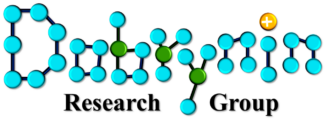Mohammad Vatankhah-Varnosfaderani, William F. M. Daniel, Matthew H. Everhart, Ashish A. Pandya, Heyi Liang, Krzysztof Matyjaszewski, Andrey V. Dobrynin & Sergei S. Sheiko
Despite the versatility of synthetic chemistry, certain combinations of mechanical softness, strength, and toughness can be difficult to achieve in a single material. These combinations are, however, commonplace in biological tissues, and are therefore needed for applications such as medical implants, tissue engineering, soft robotics, and wearable electronics. Present materials synthesis strategies are predominantly Edisonian, involving the empirical mixing of assorted monomers, crosslinking schemes, and occluded swelling agents, but this approach yields limited property control. Here we present a general strategy for mimicking the mechanical behaviour of biological materials by precisely encoding their stress–strain curves in solvent-free brush- and comb-like polymer networks (elastomers). The code consists of three independent architectural parameters—network strand length, side-chain length and grafting density. Using prototypical poly(dimethylsiloxane) elastomers, we illustrate how this parametric triplet enables the replication of the strain-stiffening characteristics of jellyfish, lung, and arterial tissues.
